New York City in just two days? It sounds like a whirlwind, and honestly, it is! But navigating the concrete jungle doesn’t have to feel overwhelming. With careful planning and insider tips, you can absolutely experience the vibrant energy, iconic landmarks, fascinating history, and diverse flavors that make the Big Apple unforgettable. This guide is designed to help you prioritize and make the most of your limited time, focusing on what to see in New York in 2 days to give you a truly memorable taste of this incredible city. Get ready for an action-packed adventure!
Day One: Uptown Wonders and Midtown Magic
Your first day in New York is all about experiencing the grandeur of Uptown and the dazzling spectacle of Midtown. This itinerary balances iconic green spaces and world-class museums with famous avenues and the bright lights of the Theater District.
Morning: Serenity in Central Park and World-Class Art at The Met
Start your exploration in the heart of Manhattan’s green oasis. what to see in new york often begins with this vast, beautiful park. Central Park offers a peaceful escape from the urban hustle and bustle. Grab a quick breakfast from a local deli and find a bench to soak in the atmosphere. Wander along the Mall, admire the intricate details of the Bethesda Terrace and Fountain, and perhaps steal a quiet moment by the Jacqueline Kennedy Onassis Reservoir. Central Park isn’t just a park; it’s a cultural institution, a historical landmark, and a daily retreat for New Yorkers, covering a staggering 842 acres. While you can spend days here, a morning stroll hits the highlights.
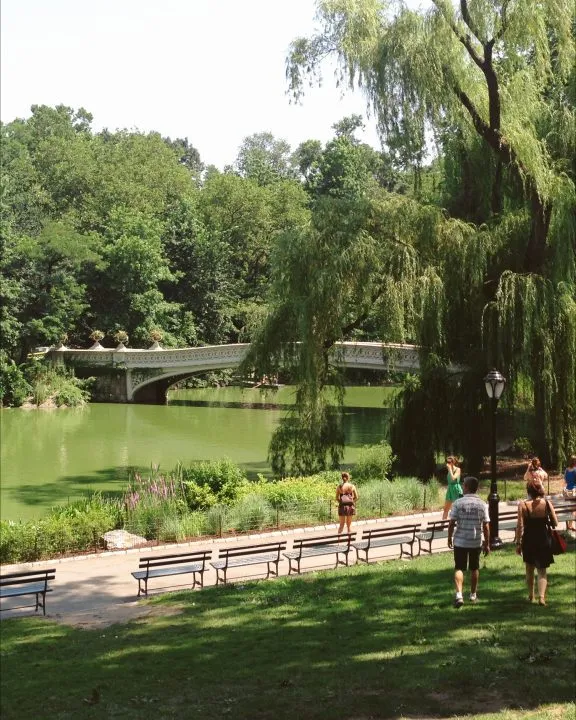 Central Park Bow Bridge is something to see on your 3 days in NYC.
Central Park Bow Bridge is something to see on your 3 days in NYC.
Exiting Central Park around 81st Street and Fifth Avenue brings you directly to one of the world’s most renowned cultural institutions: The Metropolitan Museum of Art (The Met). With only two days, you can’t see everything in this encyclopedic museum, but dedicating your late morning allows you to visit a favorite wing (like Egyptian art, European paintings, or the Costume Institute) or explore a special exhibit. The building itself is magnificent, and simply walking through its grand halls is an experience. Visiting earlier in the day often means fewer crowds, allowing for a more serene experience with the masterpieces. The Met is open seven days a week, generally until late on Fridays and Saturdays.
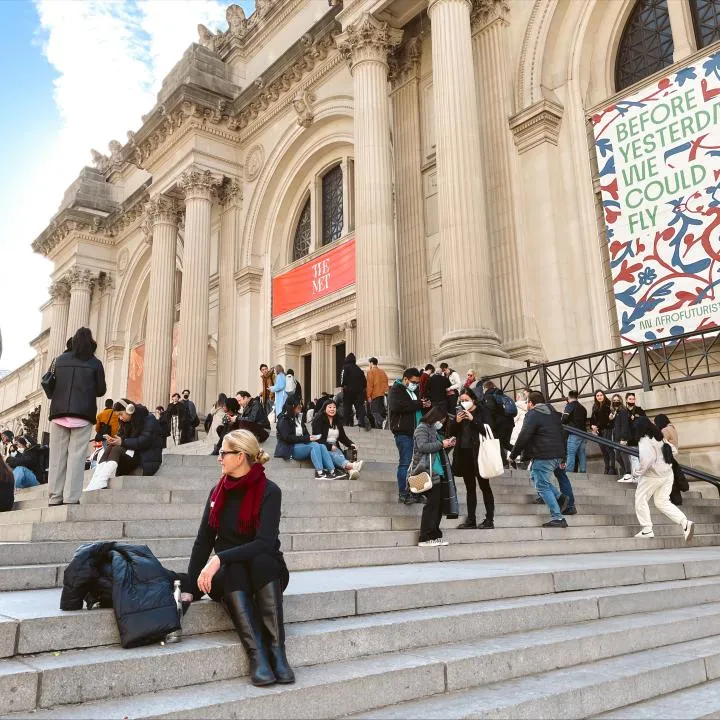 Carrie Green-Zinn sitting on the steps of The Met in New York City
Carrie Green-Zinn sitting on the steps of The Met in New York City
Afternoon: Elegant Lunch and Midtown Icons
After your dose of nature and art, take a leisurely walk south through Central Park towards its southern edge. You’ll pass the Central Park Zoo and emerge onto Fifth Avenue near Grand Army Plaza. This is where the legendary Plaza Hotel stands. Lunch at The Plaza, particularly in the opulent Palm Court, offers a taste of old New York glamour. If the Palm Court is full, The Champagne Bar is equally lovely and provides a refined setting for a midday meal, making you feel like you’ve stepped into the world of Eloise.
From The Plaza, continue south down Fifth Avenue. This stretch is famous for its luxury boutiques and stunning architecture. A short walk brings you to Rockefeller Center at 50th Street. Explore the iconic plaza with its famous Atlas statue, seasonal ice-skating rink (in winter), international flags, and the impressive facade of Radio City Music Hall. It’s a hub of activity and a prime spot for photos, representing the grandeur of mid-20th-century New York.
 Carrie Green Zinn at The Plaza in NYC
Carrie Green Zinn at The Plaza in NYC
If time and energy permit within your compressed schedule of what to see in New York in 2 days, you could continue another 20 blocks down Fifth Avenue to the Empire State Building at 34th Street and Sixth Avenue. While the exterior view is iconic, going up to the observation deck requires significant time for tickets and lines. For a short trip, enjoying the view from street level might be a better use of your precious hours, saving the panoramic view for a future visit. This allows you to maximize your time seeing a variety of sights across the city.
Evening: The Spectacle of Times Square and Broadway
As dusk falls, make your way towards 42nd Street and Broadway, plunging into the electrifying chaos of Times Square. If you’ve never been, prepare for sensory overload. Towering digital billboards illuminate the sky, street performers entertain the crowds, and the sheer volume of people creates an unparalleled energy. Climb the red steps above the TKTS booth for a prime vantage point to take it all in. While touristy, Times Square is undeniably a must-see on any quick trip, capturing the dynamic pulse of the city.
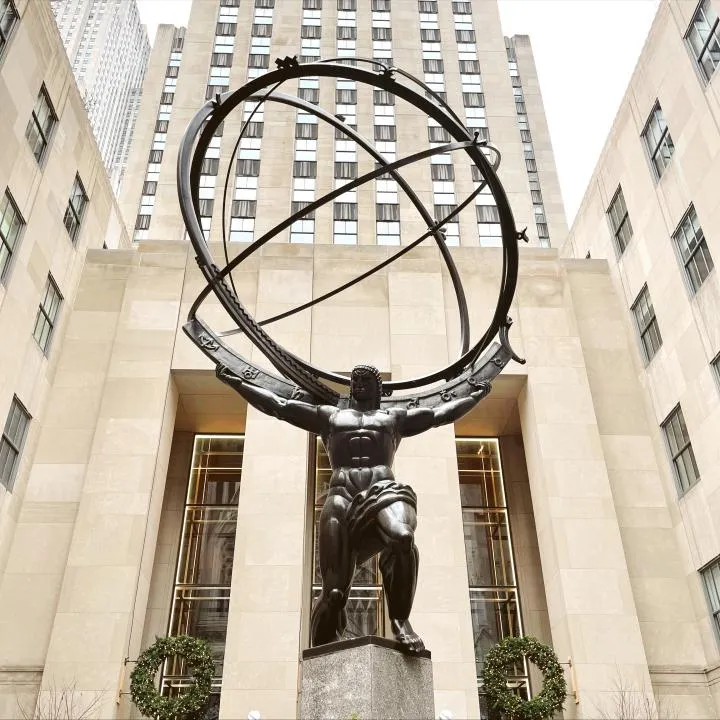 The Atlas statue in Rockefeller Center in NYC
The Atlas statue in Rockefeller Center in NYC
Before immersing yourself in the magic of a Broadway show, enjoy dinner in the Theater District. A popular and reliable choice is Dos Caminos at 47th Street and Broadway. Known for consistent quality Mexican food and its convenient location near many theaters, it allows you to have a relaxed meal without worrying about rushing to make your curtain time. Booking Broadway tickets well in advance is highly recommended, especially for popular shows, to ensure you get seats and can choose from the vast array of performances available.
Even affordable seats offer good views in most NYC theaters, making a show a quintessential New York experience. After the show, extend your evening with a drink at a nearby bar. The Theater District boasts several unique spots, from the opulent Lillie’s Victorian Establishment to stunning rooftop bars like St. Cloud or Bar 54, offering glittering city views as a perfect end to your first day.
Day Two: Downtown History, Culture, and Charming Neighborhoods
Day two focuses on Lower Manhattan, exploring its deep historical roots, financial powerhouses, poignant memorials, and vibrant immigrant neighborhoods before winding down in the bohemian charm of the West Village. This is where you truly feel the layers of New York’s past and present.
Morning: Harbor Views and Financial District Landmarks
Begin your second day by heading downtown to Battery Park, located at the southern tip of Manhattan along New York Harbor. This park offers fantastic views of the Statue of Liberty. While a ferry trip to Liberty Island is a significant time commitment, viewing “Lady Liberty” from Battery Park provides an iconic sight without sacrificing valuable time on a short trip. The park itself is a pleasant place for a morning stroll, reflecting on the city’s gateway history. If you decide you absolutely must visit the Statue of Liberty, research ferry schedules and ticket options beforehand, but be aware it will significantly impact your available time for other sights.
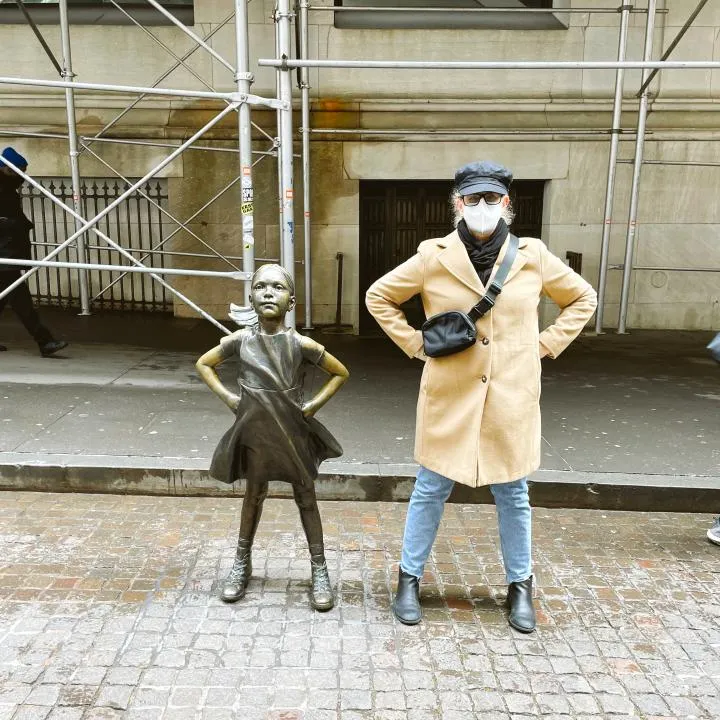 Carrie Green-Zinn next to the Fearless Girl at the New York Stock Exchange
Carrie Green-Zinn next to the Fearless Girl at the New York Stock Exchange
From Battery Park, walk north into the Financial District (FiDi). Head to Wall Street and Broad Street to see the exterior of the New York Stock Exchange building, a global symbol of finance. While visitors aren’t allowed inside, the impressive architecture and the surrounding energy are worth experiencing. Don’t miss the Fearless Girl statue nearby, a symbol of female empowerment originally placed to face down the Charging Bull. A short walk away, at Bowling Green Park, you can find the famous Charging Bull statue, a popular spot for tourist photos, added here after being controversially installed on Wall Street overnight. These landmarks encapsulate the power and drive that have shaped New York’s identity.
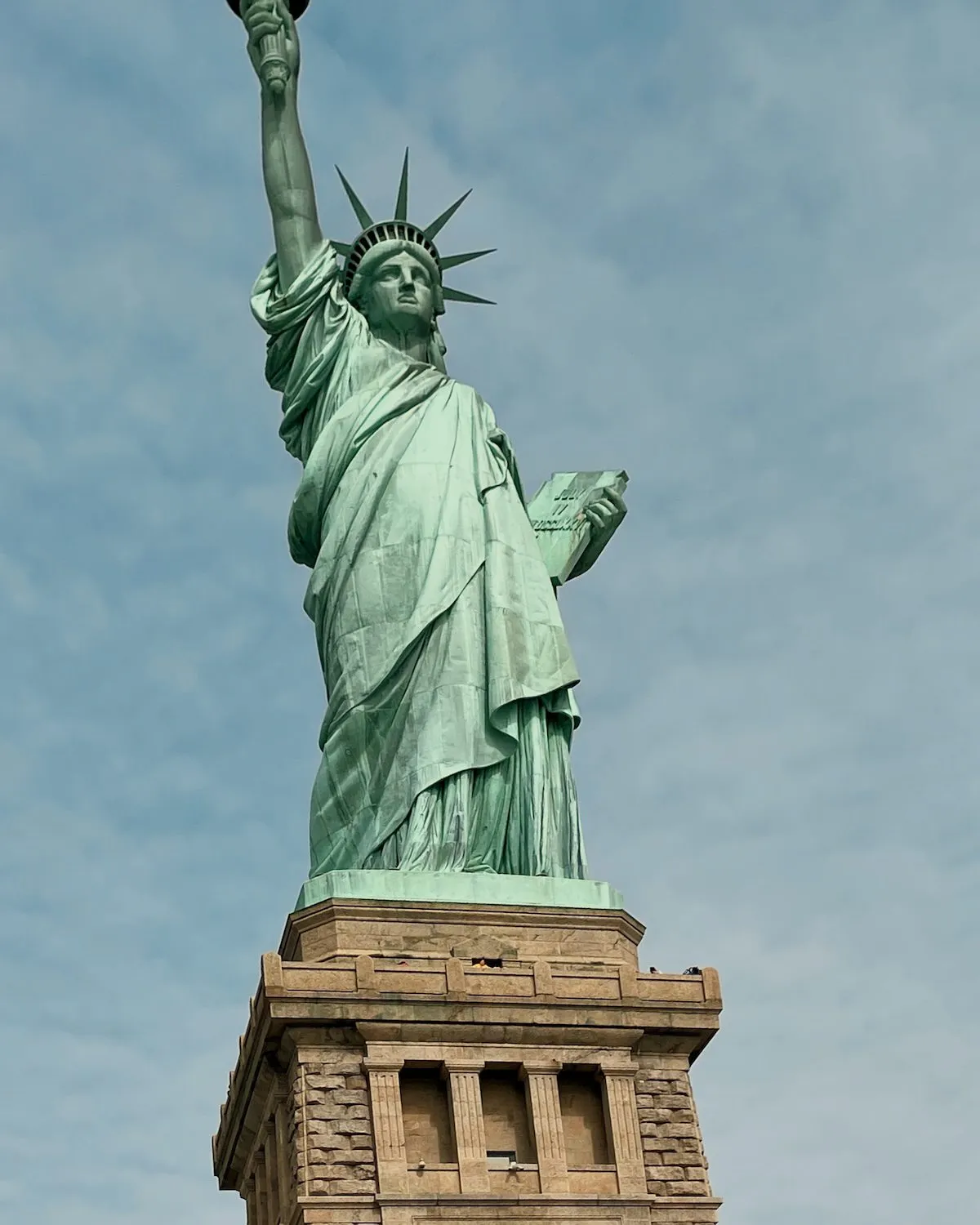 The Statue of Liberty and her Pedestal
The Statue of Liberty and her Pedestal
Afternoon: Reflection and Resilience at the World Trade Center Site
From the Charging Bull, a brief walk brings you to the World Trade Center complex. This area is a profound blend of remembrance, resilience, and modern architecture. The Oculus, designed by Santiago Calatrava, is a stunning transportation hub and shopping center resembling a bird in flight. It also offers convenient spots for lunch and restrooms before you explore the surrounding area. You can find what can you do in new york that is both moving and architectural in this district.
The heart of the site is the 9/11 Memorial Plaza. This sacred space features two reflecting pools in the footprints of the original Twin Towers, surrounded by bronze panels inscribed with the names of those lost in the 2001 attacks and the 1993 bombing. It’s a place for quiet contemplation and remembrance. Look for the “Survivor Tree,” a Callery pear tree that miraculously survived the attacks and was nursed back to health and replanted here.
While the 9/11 Memorial Museum offers a deeper, comprehensive look at the events through artifacts and personal stories, visiting the outdoor plaza is a powerful and moving experience in itself, especially when time is limited. The new One World Observatory (Freedom Tower) stands tall nearby, a symbol of the city’s resilience, offering panoramic views (another potential time commitment if you choose to ascend).
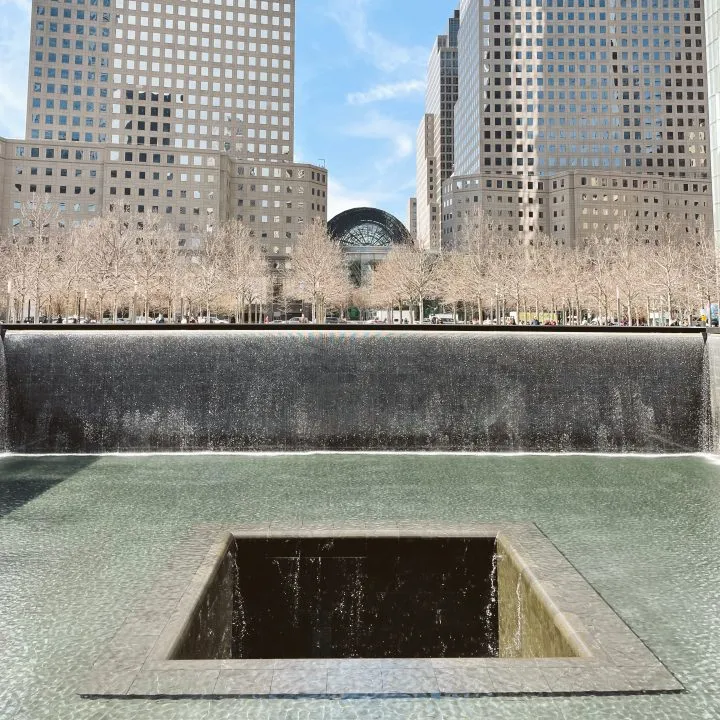 9/11 reflecting pool
9/11 reflecting pool
Late Afternoon: Flavors and Culture in Little Italy and Chinatown
Put on your walking shoes for a journey north along Center Street to two adjacent, culturally rich neighborhoods: Little Italy and Chinatown. The transition between the two is fascinating, reflecting waves of immigration that shaped the city. Chinatown is one of the oldest and largest Chinatowns in North America, a bustling area centered around Mott Street, Bleecker Street, and Chatham Square. Explore the lively streets filled with markets selling fresh produce, seafood, and traditional herbs, as well as shops offering souvenirs and goods. The sights, sounds, and smells are a vibrant cultural immersion.
Adjacent to Chinatown is Little Italy, primarily centered on Mulberry Street. While smaller than its historical footprint, it maintains a strong sense of identity with Italian restaurants, bakeries, and shops. The aroma of garlic and tomato sauce fills the air, and festive decorations often adorn the streets. Stopping for a cannoli or a strong espresso here is a must, connecting you to the traditions brought by Italian immigrants in the 19th century. Experiencing the distinct atmospheres side-by-side highlights New York’s incredible diversity. You could spend hours exploring the unique offerings and history of these neighborhoods when considering what to do in newyork.
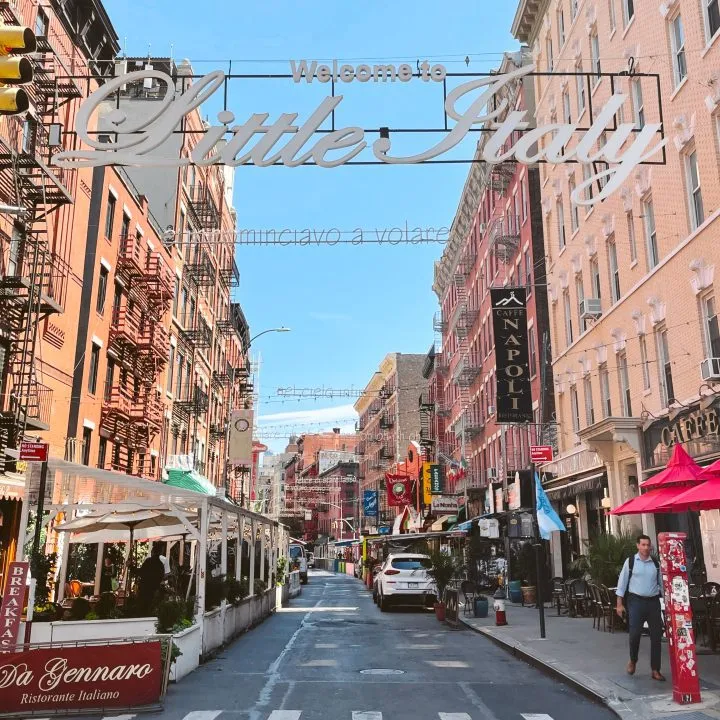 Little Italy NYC
Little Italy NYC
Evening: Bohemian Rhapsody in the West Village
As your two days near their end, walk north from Chinatown towards Washington Square Park, the unofficial heart of Greenwich Village. This large public park is always alive with street performers, students from nearby NYU, chess players, and locals. The iconic Washington Square Arch, built in 1892, is a magnificent centerpiece. Seek out the ancient “Hangman’s Elm” in the park’s northwest corner, a tree over 300 years old that witnessed centuries of the city’s growth. The West Village area, known for its charming, tree-lined streets, historic brownstones, and artistic legacy, offers a different pace from the earlier parts of your day.
The West Village is the perfect place for your final New York dinner, offering a wide range of culinary options reflecting its sophisticated yet bohemian character. Consider places like Lure Fishbar for excellent sushi, Waverly Inn for a cozy, upscale American meal, Dante for a historic Italian cafe experience (renowned globally for its bar), or Lola Taverna for fantastic Greek food.
After dinner, wander the picturesque streets like Bleecker, MacDougal, and Prince. These streets were once home to literary and artistic giants and still retain a unique atmosphere. You might even stumble upon the exteriors used for famous TV apartments, like the ‘Friends’ building at 90 Bedford Street or Carrie Bradshaw’s supposed address at 64 Perry Street, adding a pop culture layer to the historical charm. For a nightcap, explore the neighborhood’s hidden speakeasies for a taste of NYC’s secretive nightlife.
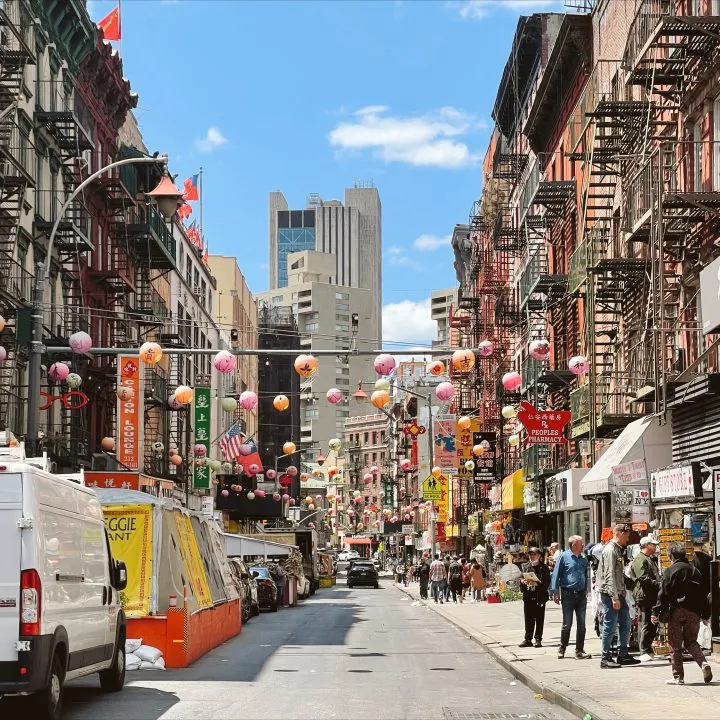 Chinatown NYC
Chinatown NYC
After Dinner: Discovering Hidden Bars
New York City’s speakeasy scene is legendary, offering unique atmospheres tucked away behind unassuming facades. Exploring one for a post-dinner drink is a quintessential NYC experience and a great way to conclude your trip. The Back Room on Norfolk Street, hidden behind a “Lower East Side Toy Company” sign down an alley, transports you back to the Prohibition era with its velvet sofas and cocktails served in teacups. The Garret West, located above a Five Guys restaurant entrance on 7th Avenue and Bleecker Street, offers delicious cocktails in a stylish setting. These hidden gems provide a final, intimate glimpse into the city’s layered history and culture.
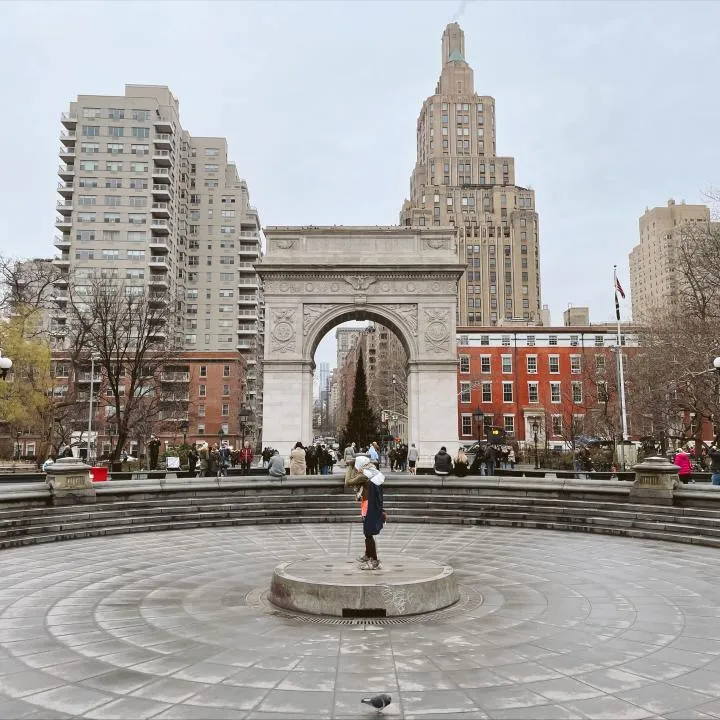 Washington Square Park is one of the Things To Do In Lower Manhattan on your 3 days in NYC.
Washington Square Park is one of the Things To Do In Lower Manhattan on your 3 days in NYC.
Getting Around New York City
Navigating New York City efficiently is key when you only have two days. A combination of walking and using public transit is the most effective strategy.
Walking is often the best way to experience the city, allowing you to soak in the atmosphere, discover hidden gems, and appreciate the scale and architecture up close. However, distances between major points on this itinerary are significant.
The subway is the city’s backbone and the fastest way to cover longer distances. Download the official MY MTA App for maps and schedules, and use your phone’s GPS app in “transit” mode to find the best routes. The easiest way to pay is by tapping your credit card or smartphone (using OMNY) at the turnstile. Tapping the same device multiple times within a week caps your fare, making it cost-effective. While subways can be crowded and sometimes gritty, they are indispensable for covering ground quickly.
Ride-sharing services like Uber, Lyft, and Revel offer convenience, especially late at night or when traveling with a group, but are generally more expensive than the subway. Taxis are also readily available to hail on the street. For some specific routes, like getting between Manhattan and outer boroughs along the water, the NYC Ferry system offers a scenic and affordable option. Download the NYC Ferry App to purchase tickets easily.
Best Time to Visit New York City
New York is a year-round destination, but the best time to visit for this itinerary often depends on your preference for weather and crowd levels.
Spring (April to early June) and Fall (September to October) generally offer the most pleasant weather – mild temperatures perfect for walking and exploring. Fall, in particular, brings beautiful foliage in the parks and comfortable 60-70°F temperatures.
Summer (mid-June to mid-August) can be hot and humid, though the city is full of outdoor activities and energy.
Winter (November to March) has its own charm. November and December are incredibly festive with holiday decorations, markets, and the famous Rockefeller Center Christmas tree, though crowds are at their peak. January and February are the coldest and least crowded months, potentially offering lower prices. Be prepared for cold weather, and possibly snow, if visiting during these months. what to do in new york in december specifically caters to the holiday season’s unique attractions.
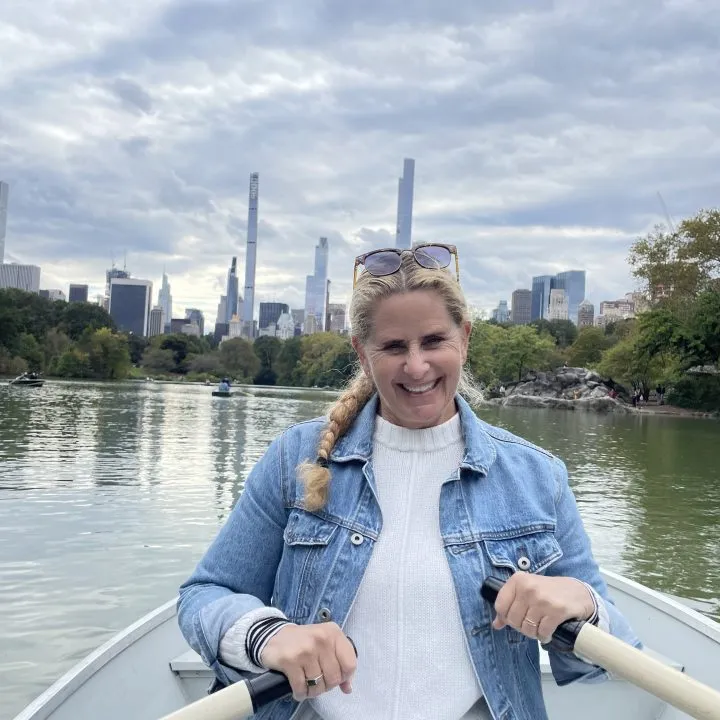 Carrie Green Zinn rowing a boat in Central Park
Carrie Green Zinn rowing a boat in Central Park
Where to Stay in NYC
Choosing where to stay depends on your budget and preferences, but for maximizing efficiency on a 2-day trip focusing on what to see in New York in 2 days, staying in Manhattan is ideal. Areas like Midtown, the Theater District, or parts of Lower Manhattan offer easy access to many sights via walking or subway. Budget options can be found further downtown or in neighborhoods like Chelsea or SoHo, while mid-range and luxury hotels are plentiful throughout Midtown and Uptown. Look for hotels with good subway access to save time traveling between distant points on your itinerary. Consider areas known to be safe and centrally located to cut down on commute times.
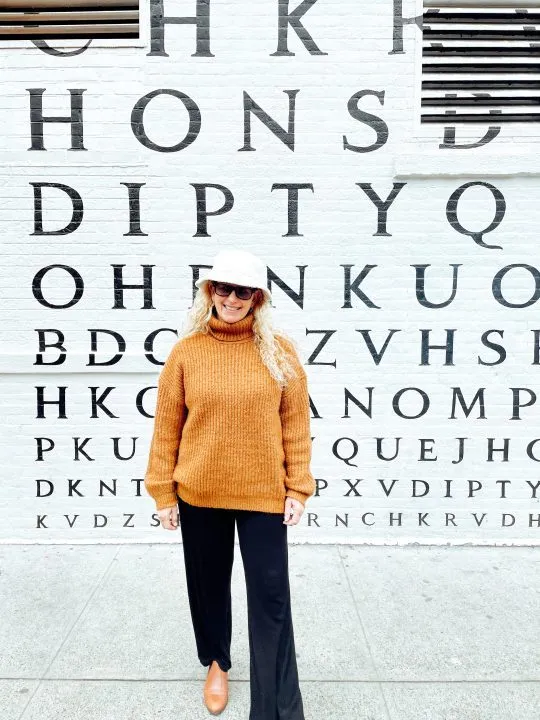 Carrie at Diptyq in SoHo
Carrie at Diptyq in SoHo
Conclusion
Whew! Two days in New York City is a whirlwind, but by focusing on what to see in New York in 2 days with a strategic plan, you can cover a surprising amount of ground. From the calming paths of Central Park and the cultural wealth of The Met to the bright lights of Times Square, the historical weight of the Financial District, the poignant beauty of the 9/11 Memorial, and the vibrant street life of Little Italy and Chinatown, culminating in the charming West Village – you’ve experienced a concentrated essence of what makes NYC unique.
This itinerary offers a blend of iconic landmarks, cultural touchstones, historical sites, and diverse neighborhoods, providing a solid foundation for understanding the city’s incredible depth and dynamism. While you can’t see everything, this carefully curated route ensures you hit many of the must-sees and leaves you with a profound sense of connection to the city that never sleeps.
Frequently Asked Questions (FAQ)
Is 2 days enough to see New York?
While two days is certainly not enough to see everything New York City has to offer, it is enough time to see many of the most iconic landmarks and get a real feel for the city’s energy and diversity. This itinerary is designed to maximize your time and cover key highlights.
What are the absolute must-see places in NYC for a short trip?
For a 2-day trip focusing on what to see in New York in 2 days, must-sees include Central Park, the Metropolitan Museum of Art (or another major museum), Times Square and the Theater District, a view of the Statue of Liberty (even from a distance), the 9/11 Memorial, and exploring a distinct neighborhood like the West Village, Chinatown, or Little Italy.
How should I get around NYC on a 2-day trip?
The most efficient way to get around on a short trip is a combination of walking and using the subway. Walking allows you to see more between closer attractions, while the subway is essential for covering longer distances quickly. Ride shares are also an option but are more expensive.
Do I need to book attractions in advance for a 2-day NYC trip?
Yes, booking popular attractions like Broadway shows, major museums (like The Met or 9/11 Museum), or observation decks (like Top of the Rock or Empire State Building if you choose to visit) in advance is highly recommended to save time waiting in lines and guarantee entry, especially during peak season. Booking dinner reservations is also wise.
What should I pack for two days in New York City?
Comfortable walking shoes are essential! Pack layers of clothing as temperatures can change throughout the day or vary between indoor and outdoor spaces. Bring an umbrella, a portable phone charger, and a secure bag to carry your essentials.
